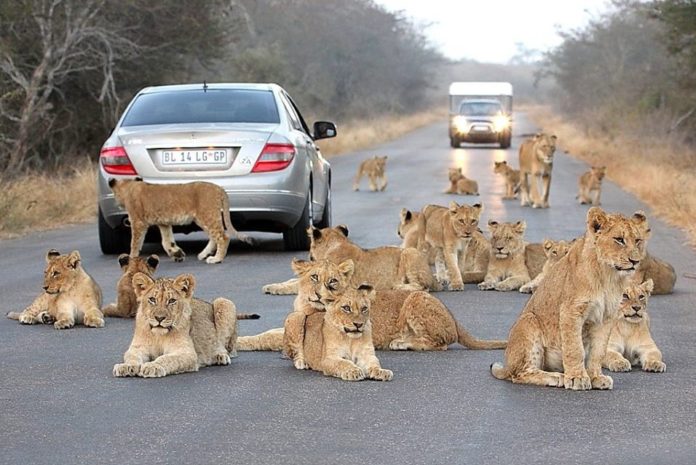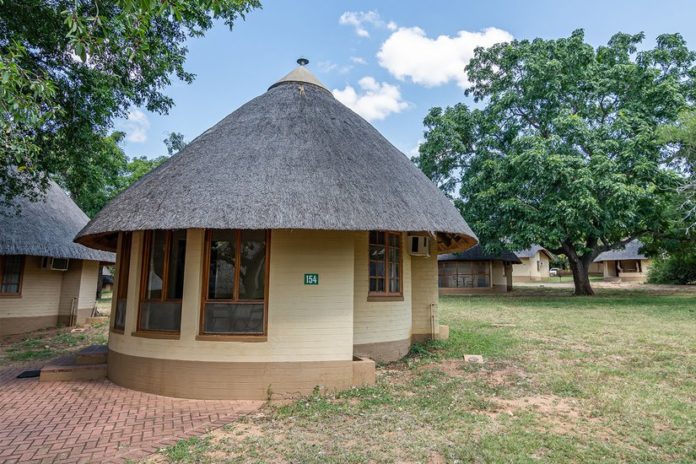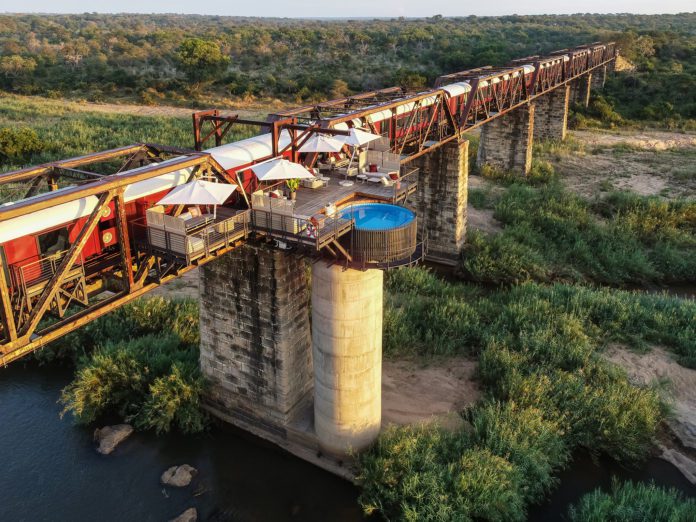Established in 1926, Kruger Park is located between Limpopo and Mpumalanga provinces and occupies an expanse of over 19,485sqkm^2 land that is 320km long. Even though it is a national park, it does have an entrance fee that varies for children, adults, and foreigners.
There are open roads with large trees like baobab spread across the park. The area is flat with hills, plains, forests, and bushes feathered with mountains, rivers, and other features that provide shelter, protection, and essential wildlife. With some of nature’s finest natural assets, the South African Kruger national park is a wonderful sight to behold in all ramifications.
Kruger National Park Dates As Far Back As The 80s
Historically, the Kruger national park dates back to 1898 when Former State President of the South African Republic Paul Kruger merged the Sabie game reserve and the Shingwedzi game reserve. At the time, the merger aimed to regulate and reduce the damage caused by hunting explorations, which posed a threat to the existence and survival of wildlife around the area.
In May 1926, the park was renamed “Kruger National Park” and opened to visitors with an entrance fee, of course. Activities were slow in its first year because only three cars were allowed into the Reserve, but this changed eventually, and business picked up. Within its first ten years in operation, the reserve became a popular tourist destination with 3,600 kilometers road network and several camp establishments.

A research station and rest camp were established at Skukuza by 1950, transforming Stevenson-Hamilton’s base into the “capital” of Kruger. From then on, the park became a historical monument for people who want to study and research the early man. Findings and archaeological sites uncovered here have shown that Homo erectus lived and hunted in the area almost 500 000 million years ago. Stone tools and artifacts found here also date back to between 100,000 and 300,000 years and prove past Iron and Stone Ages. It is on record that more than 300 archaeological sites and ruins of the Stone age man have been found within the park, in addition to evidence of early European and Portuguese explorers present at the Kruger area.
By the 1990s Kruger National outsourced certain activities and services, which led to new private camps being established. Today, the Kruger National park is the most popular and most visited wildlife destination in Africa. In 2002 the number of visitors to Kruger topped the one million mark for the first time.
The Park Is a Uniting Force For Southern African Countries
For over 90 years and counting now, Kruger National Park has been a uniting force in the African continent. It is a place where tourists and fun-seekers within South Africa and other African countries go to get the best out of tourism, recreation, and natural sightseeing. In addition to other priceless cultural treasures, and natural assets such as; bushman rock paintings, ancient archaeological sites like the Albasini Ruins, Masorini Ruins Thulamela, among others.
The park which attracts a relatively small number of tourists and visitors in its early days now records millions of tourists and visitors year in year out. Hence, it extends employment opportunities to other countries, which creates a diverse but homogeneous African experience in terms of food, clothing, and artifacts sold in souvenir shops.
In addition to these, other African countries who share a border with the park also have a settlement that is used as accommodation thereby extending the park into neighboring countries and in return, the South African government support, fund and control the local wildlife.
In the early 2000s, South Africa, Zimbabwe, and Mozambique governments signed an agreement to merge conservation areas in their respective countries to form what is now known as the Greater Limpopo Transfrontier Park. Once this process is complete, the park will be the biggest game reserve in the world linking the Kruger National Park with Mozambique Limpopo National Park and Zimbabwean Gonarezhou National Park.
Entrance Fee And Other Costs At The Kruger National Park
The entrance fee into Kruger park varies for South African citizens and foreigners, and to gain entrance into the park, you must pay the total rate upfront for the length of time you intend to spend at the park. This is a standing rule for every visitor irrespective of your nationality.
Note that the entry fee for South African citizens and residents (permanent and temporary) is quite different from that of foreigners. The fees change from time to time depending on the date and year you plan to visit the reserve, so ensure you always get an updated version of the fees on their website here. Below is what the current entrance fees look like
Current Ticket Prices Until 31 October 2021
| Visitor | Price per person per day | |
| Adult | Child (2-11 years) | |
| South African citizen/resident | R105 | R52 |
| Southern African Development Community (SADC) citizen* | R210 | R105 |
Prices from 1 November 2021 to 31 October 2022
| Visitor | Daily Price Per Person | |
| Adults | Children (2-11 Years) | |
| Resident South African citizens | R110 | R55 |
| Southern African Development Community (SADC) citizen* | R220 | R110 |
| Foreigners | R440 | R220 |
SADC Countries
- Angola
- Botswana
- Comoros
- Congo
- Eswatini (formerly Swaziland)
- Lesotho
- Madagascar
- Malawi
- Mauritius
- Mozambique
- Namibia
- Seychelles
- Tanzania
- Zambia
- Zimbabwe
Conservation Fees Rates
As mentioned above, the park charges for visits as well as time spent at the park on a daily basis which is called conservation fees. This fee is used to conserve the park’s natural and cultural heritage.
Standard Daily Conservation Fee: International Visitors
1 November 2020 – 31 October 2021
- Per Adult: ZAR 424
- Per Child under 12: ZAR 212
Standard Daily Conservation Fee: South African Citizens and Residents (with ID)
1 November 2020 – 31 October 2021
- Per Adult per day: ZAR 105
- Per Child under 12: ZAR 52
SADC Nationals (with passport)
1 November 2020 – 31 October 2021
- Per Adult per day: ZAR 210
- Per Child under 12: ZAR 105
Note: Members of SANParks’ loyalty programme WILD, are not required to pay daily conservation fees as far as they show proof of Identity and their WILD cards at the entrance.
The fees change from time to time depending on the date and year you plan to visit the reserve, so ensure you always get an updated version of the fees on their website here
Additional Information:
Day Visitors
If you plan to visit the park as a day, you should have pre-booked your day entry. If you want to spend the night within the park, you will need to pay an additional R46 per adult and R23 per child in advance. This also applies to Wild Card members (more about Wild Cards below here).
Day Visitors on Guided Game Drives
If you intend to be on a guided game drive during your one-day visit, please note that it will be factored into your entry cost.
Things To Expect At Kruger National Park
Visitors at the Kruger national park have continually been thrilled with the generous deposits of natural diversities found in the park and the numerous wildlife view. The beautiful terrains of low land and hills, the mountains, rivers, colorful setting and the abundant species of animals and plants give visitors a relaxing adventure and value for their money and time spent at the park.
Kruger park also offers a lineup of promising fun-filled activities to engage in; Kids are treated to an exciting young animals safari, games, and animal toys. There are family activities as well. Adults participate in series of adventures and activities such as a tour of the Kruger park museum which houses rich African artifacts, art, as well as historical and archaeological relics. The hot air balloon flight gives a breathtaking view of the park landscape above the ground, where activities like horse riding, game drives, Hiking, picnics, bush walks, dinners, parties, and many more take place. Visitors are also meant to enjoy a relaxing experience in the spa.

Visitors can also enjoy a drive through the park with its spectacular view. From the accommodations and the serene terrains to the natural features of the park; the trees, mountains, rivers, rocks, and ancient settlement all gives one a desire of being at peace with nature.
Additionally, the Park and Ride Scheme is a favorite activity where tourists come eye to eye with different species of wildlife and creatures including; The Big Five – Lions, Leopards, Buffalos, Rhinos, and Elephants. The Little Five – Buffalo Weavers, Elephant Shrews, Leopard Tortoises, Ant Lion,s and Rhino Beetles. Not forgetting the Birding Big Six– Ground Hornbill, Kori Bustard, Lappet-faced Vulture, Martial Eagle, Pel’s Fishing Owl, and the Saddle-bill Stork. These are all available in the Marula Region – Numbi, Phabeni, and Kruger gates. Other adventurous activities include Bush Braais, eco trails, backpacking, day walks, and lots more.
There Are Best Of Facilities At The Park
Kruger Park has state-of-the-art facilities that offer top-notch conference halls, luxury accommodations, and lush picnic sites. The conference halls are located at Berg-en-Dal, Shingwedzi and Skukuza, Bateleur and Letaba and they are ideal for weddings, parties, retreats, picnics, and family events.
There is also the Skukuza Indigenous Plant Nursery which affords visitors the rare opportunity of exploring the wide variety of Lowveld species, as well as the mostly endemic plants indigenous to the Kruger National Park and spread across Pretoriuskop, Malelane Gate and Letaba.
Shops are also found in all rest camps in the park, while standard swimming pool facilities are situated at Punda Maria, Satara, Shingwedzi and Skukuza Lower Sabie, Mopani, Olifants, Orpen, Pretoriuskop, Berg-en-Dal, and Letaba. You can never get stranded without cash to pay your bills as there are also banks and ATM facilities found at Skukuza and an ATM at Skukuza and Letaba.
Wi-Fi and internet café facilities, are available at Berg-en-Dal and Skukuza. Gas Stations are available for visitors to use and in case of any health emergency, the park has well-equipped hospital facilities to cater for visiting patients.

Best Times To Visit The Park
To be assured of an unforgettable experience at Kruger Park, the dry season is advised as the best time to visit the park; this is usually between April and September. The climate at this time is conducive for animals and humans alike. All through the day and night animals are sighted either eating, resting, or milling around in groups or individually. During this season, visitors can also partake in outdoor fun activities without being interrupted by the weather.
Gate Times
In order to avoid disappointments, it is important for you to be abreast with the entrance days and times.
Entrance Gates Opening Times
Oct-Mar: 05:30
Apr – Sep: 06:00
Camp Gates Opening Times
Oct: 05:30
Nov – Jan: 04:30
Feb – Mar: 05:30
Apr – Sep: 06:00
Entrance & Camp Gate Closing Times
Aug – Oct: 18:00
Nov – Feb: 18:30
Mar-Apr: 18:00
May – Jul: 17:30
Kruger National Park Is a Safe Environment
While at Kruger park, remember that your safety is important to the management. In this regard, your knowledge of safety tips comes in handy. The Kruger national park has trained security personnel, rangers, local hunters, trackers and tour guides who offer scheduled tours. The environment in and around the park is also well guarded and secure.
Despite the above, visitors are lectured on safety precautions to take and abide by during their stay in the park, or when going out into the wildlife for a bushwalk, and scheduled or private outings. Some of these safety tips include:
- Keep a map of the Kruger park
- Do not wander too far from the park or rest camps
- Do not walk alone
- Always have a torchlight when going out at night
- Keep to speed limit when driving on a dirt or tarred road
- Keep your windows up
- Alcohol consumption is prohibited in public places
